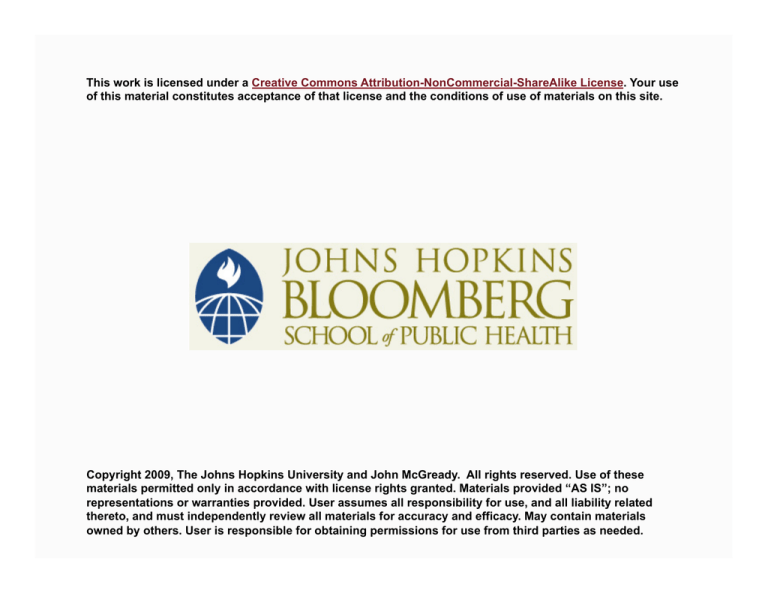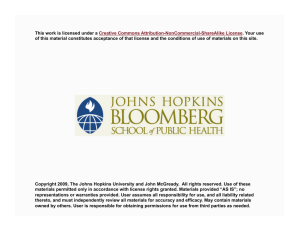
This work is licensed under a Creative Commons Attribution-NonCommercial-ShareAlike License. Your use
of this material constitutes acceptance of that license and the conditions of use of materials on this site.
Copyright 2009, The Johns Hopkins University and John McGready. All rights reserved. Use of these
materials permitted only in accordance with license rights granted. Materials provided “AS IS”; no
representations or warranties provided. User assumes all responsibility for use, and all liability related
thereto, and must independently review all materials for accuracy and efficacy. May contain materials
owned by others. User is responsible for obtaining permissions for use from third parties as needed.
Lecture 2b: Practice Problems
John McGready
Johns Hopkins University
Practice Problems
Suppose a population is normally distributed (and you are a member
of the population)
1. If you have a standard score of Z = 2, what percentage of the
population has scores greater than you?
2. If you have a standard score of Z = - 2, what percentage of the
population has scores greater than you?
3. If you have a standard score of Z = 1, what percentage of the
population has scores less than you?
4. If you have a standard score of Z = 1, what percentage of the
population has scores farther away from the population mean
(in either direction) than you?
5. If you have a standard score of Z = -1.7, what percentage of
the population has scores farther away from the population
mean (in either direction) than you?
6. If you have a standard score of Z = -1.7, what percentage of
the population has scores greater than you?
3
Practice Problems
7. Suppose the distribution of grades in your statistics class is normal,
with mean = 83.4, s = 7. There are 120 total in the class. If you
score a 97.4 in the class, roughly how many people have scores
higher than you?
8. Suppose we call unusual observations in a population of normally
distributed values those that are either at least 2 SD above the
mean or about 2 SD below the mean. What percent are unusual? In
other words, what percent of the observations will have a standard
score either Z > + 2.0 or Z < -2.0? What percent would have |Z| >
2?
4




